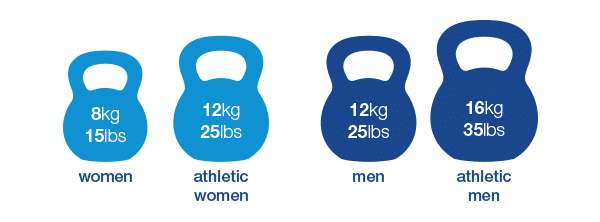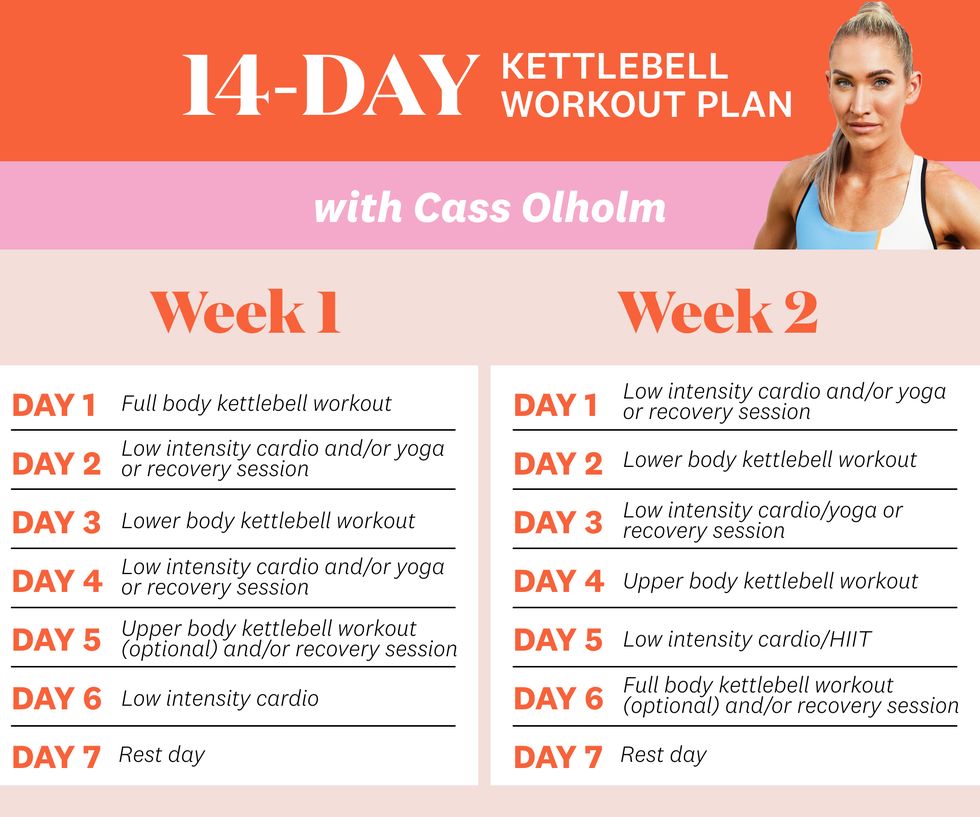Your living room floor. One cast-iron kettlebell. Real results. Forget intimidating gym machines or confusing workout apps—female kettlebell exercises deliver transformative strength where women need it most. Unlike traditional weights, kettlebells work with your body’s natural movement patterns to build functional power for lifting groceries, chasing kids, or simply feeling unstoppable. Backed by research showing significant grip-strength gains and body-composition improvements in women over 59, these dynamic moves reshape your physique while training the deep core stabilizers often missed in standard routines. In the next few minutes, you’ll discover exactly which female kettlebell exercises deliver maximum results, how to choose your perfect weight, and a simple 5-week plan that fits between school runs or work meetings.
Why Female Physiology Loves Kettlebell Dynamics
Kettlebells aren’t just dumbbells with handles—they’re physics-powered tools engineered for women’s unique movement patterns. That off-center weight distribution forces your core and stabilizer muscles to fire continuously during every swing and squat, mimicking real-world lifting scenarios like hoisting suitcases or carrying toddlers. This isn’t theoretical; a 2022 study tracking women aged 59-79 revealed six months of kettlebell training boosted grip strength significantly while improving body composition—all without a single treadmill session.
How Hip-Driven Power Protects Your Spine
Every explosive kettlebell swing triggers a reflexive core tightening that shields your lower back far more effectively than isolated crunches. When you snap your hips forward during a swing, your transverse abdominis (your body’s natural weight belt) automatically engages to stabilize your spine. This dynamic bracing builds functional core strength that translates directly to safer lifting in daily life—no more wincing when picking up preschoolers or heavy laundry baskets.
Balancing Your Muscle Fiber Profile
Women naturally have more slow-twitch endurance fibers, which is great for marathons but less so for building power. Female kettlebell exercises like snatches and cleans specifically target fast-twitch type-II fibers, revving your resting metabolism and creating lean muscle mass that burns calories 24/7. This metabolic advantage means you’ll see results faster than with steady-state cardio alone.
Selecting Your Perfect Kettlebell Weight

Choosing incorrectly wastes time or risks injury—get this right and you’ll progress for months with one bell. Forget men’s weight charts; these female-specific guidelines account for common strength differentials between upper and lower body:
| Experience Level | Lower-Body Moves | Upper-Body Moves |
|---|---|---|
| First Time | 6–8 kg | 2–4 kg |
| 0–6 Months | 8–12 kg | 4–8 kg |
| 6–24 Months | 12–20 kg | 8–12 kg |
| 2+ Years | 20 kg+ | 12–16 kg+ |
Critical rule: Pick the heaviest bell allowing 8–10 flawless reps in your weakest movement—usually the overhead press. If your ribs flare during pressing or your lower back arches in swings, you’re too heavy. Start conservatively; women see dramatic strength gains in just 4 weeks with proper loading.
Your 5-Week Female Kettlebell Transformation Plan

Forget hour-long sessions—two 15-minute workouts weekly deliver measurable results when structured correctly. This science-backed plan alternates swing-focused days with upper-body strength sessions, letting you recover while building power.
Minimum Effective Dose Protocol
Rest 24+ hours between same-muscle-group sessions. For strength: 30 seconds work, 60–90 seconds rest (3–5 sets). For fat-burning: 40 seconds on, 20 seconds off (6–8 rounds). The standout format? EMOM (every minute on the minute) swings: Start with 7 swings every minute for 10 minutes. As you get stronger, add one swing weekly until hitting 20 minutes.
Week-by-Week Progression
| Week | Swing Day (EMOM) | Press Day |
|---|---|---|
| 1 | 10 minutes × 7 swings | 5-4-3-2-1 rep ladder |
| 2 | 13 minutes × 7 | 5-4-3-2-1 × 4 sets |
| 3 | 16 minutes × 7 | 6-5-4-3-2-1 ladder |
| 4 | 19 minutes × 7 | 6-5-4-3-2 × 3 sets |
| 5 | 20 minutes × 7 → deload to 10 min | 6-4-2 × 2 sets |
Test your progress at week’s end: max swings in 2 minutes, single-arm press max, and pull-up count. Note how week 5’s deload prevents burnout while cementing gains.
Lower-Body Kettlebell Moves for Glute Power
Goblet Squat: The Postpartum Hero
Hold the bell by the horns against your sternum—this counterbalance prevents forward lean that strains lower backs. Sit hips back until thighs break parallel, driving through heels to stand. Female-specific cue: Squeeze the bell like you’re hugging a baby, keeping elbows tucked inside knees. This activates deep core stabilizers critical for post-delivery recovery.
Sumo Squat: Widen Your Base for Wider Gains
Widen your stance beyond hip-width, toes turned out 45 degrees. Let the bell hang between legs as you lower, actively driving knees outward to track toes. This angle maximizes gluteus medius engagement—your hip-stabilizing muscle often weakened by pregnancy and high heels. Feel the burn along your inner thighs? That’s your adductors waking up.
Single-Leg Romanian Deadlift: Balance Without Wobble
Stand on one leg, bell in opposite hand. Soften the stance knee as you hinge forward, keeping pelvis level until torso nears parallel to floor. Powerfully snap glutes to return upright. Pro tip: Place your free hand on a wall initially. This builds foot intrinsics (tiny arch muscles) often neglected in flat-shoe wearers.
Upper-Body Kettlebell Moves for Functional Strength
Single-Arm Overhead Press: Fix Rib Flare Instantly
From rack position (bell resting on forearm, elbow at hip), exhale sharply as you press vertically. Critical female adjustment: Imagine tucking your ribs down toward your pelvis to prevent that flared-chest look that compromises core integrity. This subtle shift protects your spine while building shoulder stability.
Half-Kneeling Press: Core Rebuilder for New Moms
With rear knee down and front foot planted, press the bell upward without using leg drive. Key detail: Dorsiflex your rear foot (toes toward shin) and tuck your tailbone to eliminate lumbar arching. This position isolates shoulder strength while gently retraining the deep core connection often disrupted by pregnancy.
Bent-Over Row: Lat Activation Made Simple
Hip hinge until torso is 45 degrees, back flat. Pull the bell toward your hip—not your chest—with elbow glued to your side. Visual cue: Imagine sliding your shoulder blade into your back pocket. Stop shrugging—true lat engagement creates a “fullness” under your armpit, not neck tension.
Core & Carries That Reshape Your Midsection
Kettlebell Halo: Unlock Frozen Shoulders
Using a light bell (2-4 kg), slowly orbit it around your head like a halo—10 circles clockwise, 10 counterclockwise. Keep chin tucked and spine tall. This isn’t just mobility work; the anti-rotation demand fires up your entire core cylinder. Notice how your obliques engage to prevent wobble? That’s functional strength in action.
Suitcase Carry: The Oblique Secret
Walk 20-40 meters holding one heavy bell at your side, keeping torso perfectly upright. Warning: If you lean sideways, you’re too heavy. This anti-lateral-flexion challenge builds bulletproof obliques without spinal twisting—ideal for preventing postpartum diastasis recti complications.
Two Female-Specific Starter Circuits
Beginner Full-Body (3 Rounds, 45s Rest)
- Deadlift: 10 reps (hinge at hips, bell between knees)
- Goblet Squat: 10 reps
- Bent-Over Row: 10 reps
- Upright Row: 10 reps (elbows high, bell to collarbone)
- Reverse Lunge: 10 reps/leg
10-Minute AMRAP Fat Burner
As many rounds as possible in 10 minutes:
– 15 Two-Hand Swings
– 10 Goblet Squats
– 8 Single-Arm Press (switch arms each round)
– 8 Rows
– 6 Sit-Up to Press-Ups
3-Minute Warm-Up That Prevents Injury
Skip generic stretches—prime your system for kettlebell dynamics:
1. World’s Greatest Stretch: 2 reps/side (opens hips/thoracic spine)
2. Bear Walkouts: 5 reps (activates shoulder stabilizers)
3. Light Halo: 10 reps/direction (lubricates shoulder joints)
This sequence addresses women’s common mobility restrictions in under 180 seconds.
Critical Safety Checks for Female Bodies
- Pelvic floor pressure: Exhale forcefully on exertion (like blowing out candles) to avoid downward pressure spikes during swings or presses.
- Diastasis recti warning: Skip all overhead work until a physical therapist confirms core integration—substitute half-kneeling presses.
- Wrist pain fix: Rotate the bell handle diagonally across your palm (“corkscrew grip”) to maintain neutral alignment in rack position.
Progression Rules That Prevent Plateaus
Add weight only when you nail 15 perfect reps with current bell. Better yet: maintain your weight while adding 1-2 reps weekly for two consecutive sessions. This micro-progression builds joint resilience while avoiding the “too heavy too soon” trap that derails so many women. Remember—your strongest version isn’t built in one heroic session but through consistent, intelligent female kettlebell exercises that honor your body’s wisdom.
Grab your kettlebell, cue the timer, and swing into strength. With these science-backed female kettlebell exercises, you’re not just lifting iron—you’re reclaiming the powerful, capable body you were born to have. One perfect rep at a time.




